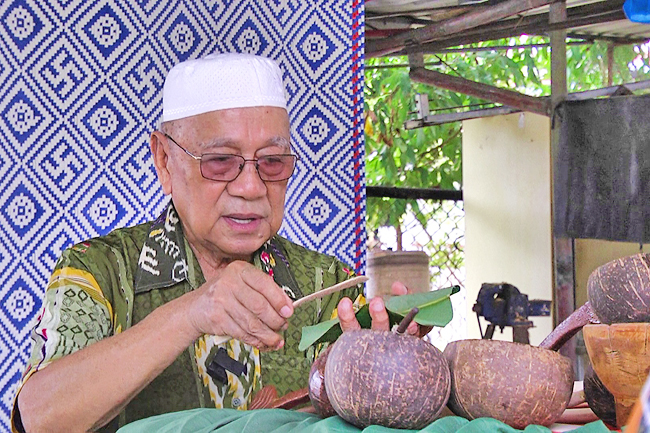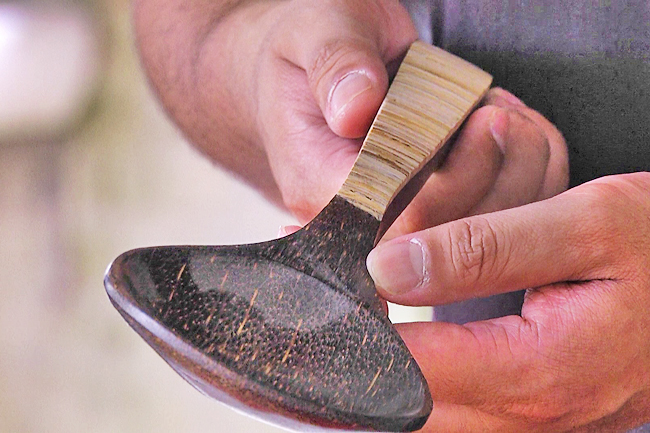Daniel Lim
Historically, cooking can be quite a communal experience, especially when friends and family gather to exchange news as they prepare food for an entire village.
At the heart of this culture, hidden amid other stories of Brunei’s rich tradition, is the humble gegawi, an unassuming cooking utensil that was in the past a common tool in every household.
“When you look back, gegawi is one of the many tools for all types of cooking,” said Acting Village Head of Kampong Mumong ‘A’ Haji Mohd Yusof bin Haji Dulamin.
A gegawi is commonly made out of wood, with varying sizes made to be suited to stirring up the communal pot and carefully crafting traditional delicacies.
Larger gegawi, similar in size and shape to a paddle, were used for cooking with large pots, while smaller ones were used to pack and shape delicacies such as kelupis.



An avid collector, Haji Mohd Yusof also makes gegawi, a skill passed down to him from his elders.
“Gegawi is deeply embedded in our history, across all the seven indigenous groups, in Bahasa Brunei, we call it gegawi, but it is sometimes referred to as pukaww in Bahasa Tutong, or ukaww in Bahasa Belait,” he explained.
The making of gegawi begins with the selection of material.
“Hardwoods that do not easily crack or break such as selangan batu, or kayu merbau, are usually the go-to material, with kayu kulimpapa tanduk being the best choice. “Certain wood that gegawi are made from can also add certain flavours and fragrances into the mix.”
When the right material is chosen, the meticulous work of shaping the gegawi begins. “In the old days, we used to make gegawi using a parang or pemarang to shape its core, which we file down using a pisau raut (whittling knife),” said Haji Mohd Yusof, adding that it could take weeks to finish.
Back then, sandpaper wasn’t widely available either, he said. Instead, traditional crafters use daun mempelas, similar to leaves of a jackfruit tree, which has a rough-textured surfaces, to sand down and smooth out the finished product.
The art of crafting gegawi, like many traditional cooking utensils, has transformed from a vital necessity to something more akin to a pasttime or hobby. More easily manufactured modern cooking utensils are now Widely available, alternatives to gegawi, which had once played an important role in traditional Brunei cuisine.
Despite this, Haji Mohd Yusof hopes the art of making gegawi continues to be passed down from generation to generation.
For him, it is more than just a tool. It is also part of the country’s traditional heritage.







